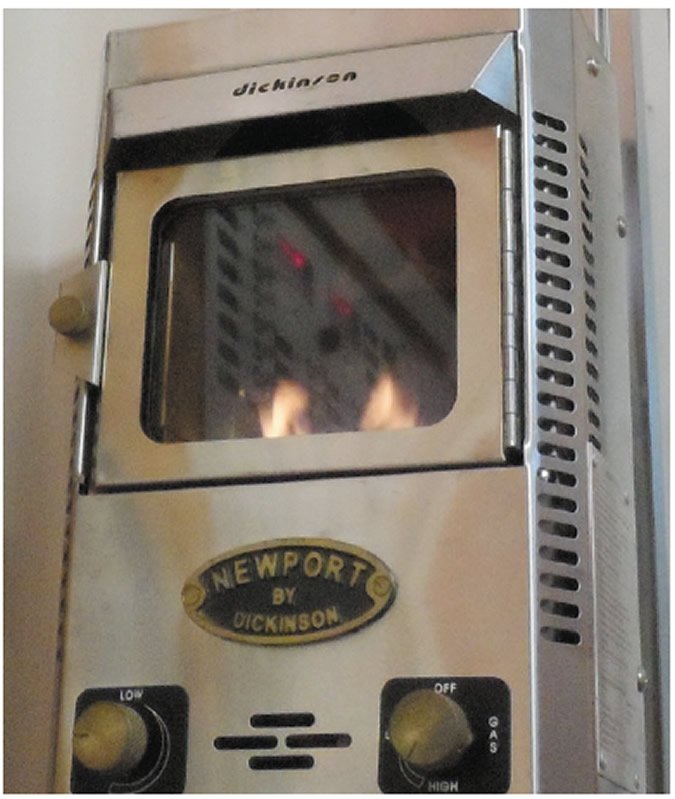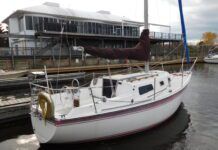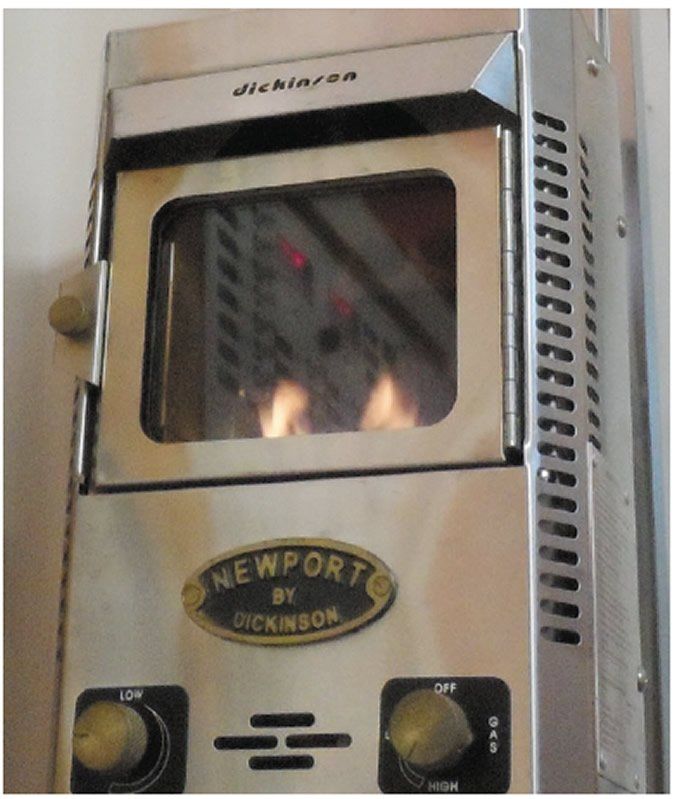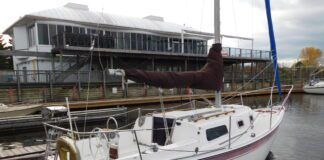
Although rules of thumb for heating requirements exist, every boat is different. A simple way to measure the heating requirements of a boat is to use a space heater and a few simple calculations. A typical electric space heater is 1,500 watts, or 5,150 British Thermal Units per hour output when set on high. Pick a cool day (does not need to be the coldest expected day) and observe how many watts it takes to warm the boat and how many watts are required to hold that temperature. Several hours should be allowed for this test (it takes time for the furnishings and hull liner to warm up), and it is best done at night when temperatures are cooler.
To figure required heater output in BTUs, use this formula:
Required BTUs = watts x 3.41 x (lowest anticipated exterior temperature – desired interior temperature)/(exterior temperature during test – test interior temperature during test)
In the case of our test boat, we determined we needed 1.5 x 1,500-watt heaters (6,394 BTU/hour) to maintain approximately 75 degrees in the cabin on a 20-degree night (our projected coldest cruising temperature). Unfortunately, the P9000 delivers only 3,872 BTU/hour (at 61 percent of maximum load), and the space available would not fit a larger heater. On nights when temperatures dip below freezing, we have to bundle up, or close off all unoccupied cabin spaces.
Does the Dickinsion P9000 actually produce the heat it claims? While direct measurement of output is complicated, engineers have a short-cut method used to estimate the efficiency of boilers and heaters. It is based on the principle of conservation of energy. If we know the heating value of the fuel and we can measure the energy leaving through the stack, whatever remains must have been delivered as cabin heat.
After measuring the stack temperature (329 degrees), ambient temperature (20 degrees), excess oxygen in the stack (6 percent), and pre-heat temperature, we calculated an overall efficiency of 88 percent; quite good for a tiny heater and comparable to modern home heating furnaces. The stated heat output of the P9000 (3,872 BTU/hour) roughly matches our observations.





































Does it matter if the temperature scale used is Fahrenheit or Celsius? My gut says that is is a ratio so it shouldn’t matter, but my gut has been known to be wrong….